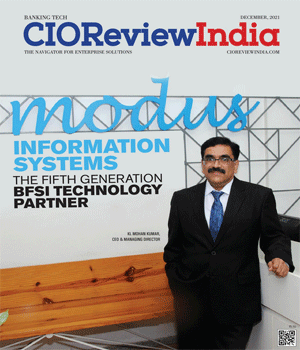
Harnessing the power of Big Data to drive the customer experience revolution
Amit Sethi, CIO, Axis Bank | Tuesday, 08 March 2016, 05:59 IST
 Big data analytics is facilitating businesses in fraud prevention, customer service and providing customized solutions to clients. Using analytics with mobile specific technologies such as geo location helps provide enhanced customer experience. A good example is Uber that disrupted the taxi market by using real-time location data of riders and drivers to optimize driver locations, enable surge pricing and get customers to their destinations quickly.
Big data analytics is facilitating businesses in fraud prevention, customer service and providing customized solutions to clients. Using analytics with mobile specific technologies such as geo location helps provide enhanced customer experience. A good example is Uber that disrupted the taxi market by using real-time location data of riders and drivers to optimize driver locations, enable surge pricing and get customers to their destinations quickly.
Big data is helping us do the small data – knowing the customer intimately and providing personalized products/services. While larger datasets can deliver more and more insights, sheer volume is not the magic bullet. Smaller dataset with all the right pieces of information in place can deliver distinct competitive advantage. Whenever information growth overtakes our capability to derive meaningful insights, there is a real danger that more information causes more problems in identifying the right course of action. In addition to the challenges associated with ‘Volume’ and ‘Velocity’, organizations are also coping up with the increasing variety of data types and sources.
In order to address the significant challenges associated with business value generation and skillsets to harness the power of Big Data, enterprises need to put together their strategy in the following areas.
•Information management
Enterprises need to drive innovation and find newer ways to process information. Ability to ingest variety of data sources and derive insights in real time could be the real value addition that we can achieve.
Many organizations including Axis Bank have invested in building a data warehouse to ensure single version of truth across the enterprise. Our strategy should be to leverage the existing infrastructure investments and not abandon them while moving to big data platforms.We use RDBMS based data warehouse for storing the historical and structured data. With ever increasing data volumes, it is not reasonable to extract all data from all systems in order to persist it in a physical warehouse for querying/reporting. We need to find newer ways to consume multiple information types and sources in real time.Newer integration approaches will have to be adopted. Many organizations including Axis Bank are experimenting with the concept of a logical data warehouse that allows you to bring together multiple disparate information sources into a consolidated view.One size doesn’t fit all in terms of data storage and processing. We have to use a variety of different data storage technologies for different kinds of data. If we take the example of an ecommerce company, it may use RIAK for shopping cart to ensure high availability across multiple locations, RDBMS data store for financial and reporting data, REGIS for managing user sessions, and Cassandra for user activity logs and large scale analytics.
•Putting the right team together
It is crucial to empower cross functional teams with business and IT skills. IT has to equip analysts with analytics work bench and data scientists with a Data Science laboratory. We will have to use newer recruitment techniques to find the right talent. Many new age players including Axis Bank are experimenting with crowdsourced analytics competition platforms to spot the candidates who love data and can use their expertise to solve real problems.
•Build use cases for Big Data
We can classify big data use cases into two categories - internal and external customer facing use cases. Internal use cases focus on optimizing business processes and reducing costs associated with proprietary data warehouse. Enterprises want to conduct complex analytics on deep history without ever deleting data for conserving storage space.
Customer facing use cases include building customer genome by combining the internal transaction, demographics, click stream and touch stream data with external social media data and web logs to better understand customer behavior, gain lifestyle and life stage insights, and uncover newer revenue opportunities. We are experimenting with Artificial Intelligence to build better models that can intervene at various levels of buying process through recommendation systems, upsell and pricing applications.
We are using Google big query for processing very large data sets on cloud. It provides faster performance and scalable architecture for processing very large transaction data sets to derive next best action.We are also using Google analytics to figure out who our customers are, how they are getting to our sites and what they are doing on our mobile app and website.
With the right strategy, big data will play a central role in building the next gen enterprises that can succeed in this digital world and provide breakthrough customer experience.
CIO Viewpoint
Machine Learning In Cybersecurity: The Risks &...
By Neelesh Kripalani, Chief Technology Officer, Clover Infotech
5 Major Saas Trends To Check-Out In 2021
By Vikas Bhonsle, CEO, Crayon Software Experts India
Artificial Intelligence & The Disruptive Chatbot
By Vishal Sinha, President & CIO, Tranzlease Holdings
CXO Insights
Crafting the Digital Journey in Banking
By Janifha Evangeline
Incorporating Blockchain Capabilities into...




.jpg)
.jpg)





